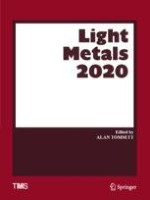2020 | OriginalPaper | Buchkapitel
Comparison Between Different Laminated Aluminum Busbars Expansion Joints in Terms of Mechanical Performance and Relative Costs
verfasst von : André Felipe Schneider, Daniel Richard, David Leroux, Olivier Charette, Francis Quintal
Erschienen in: Light Metals 2020
Aktivieren Sie unsere intelligente Suche, um passende Fachinhalte oder Patente zu finden.
Wählen Sie Textabschnitte aus um mit Künstlicher Intelligenz passenden Patente zu finden. powered by
Markieren Sie Textabschnitte, um KI-gestützt weitere passende Inhalte zu finden. powered by
